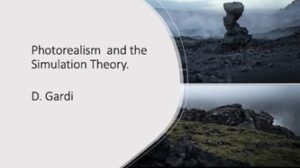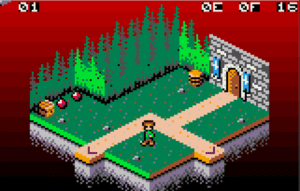Photorealism and The Simulation Theory
10th March 2021

Introduction and question
The pursuit of increased efficiency has constantly been sought by humans since the dawn of man. We often see advancements in technology beget spaghettified microcosms of innovation. Before the creation and subsequent improvement on the idea of mobile app stores, the idea of an app like Uber would have never been considered.
As technology improves exponentially for the sake of human betterment, we find ourselves asking where we need to improve next?
If you want a good example of how technology has adapted, and improved our lives, look no further than gaming. As graphical processing power increases so do the improvements to gaming to create a more immersive and thrilling world to dive into. Looking at the enhancements made to Unreal Engine 4 (3D Creation Engine) and comparing that to something like the Atari, we can see a just how far we have come in a few short decades.
Taking the graphical power available today, Unreal Engine can create high fidelity photorealistic imagery that even fools me! Advancements in graphical power like this not only means gaming and movie CGI is more realistic. The help of engines like this has revolutionised fields within our business such as civil engineering (Sparca Civil) and medical technology (Advanced Ophthalmic Systems) where photorealism and high-fidelity images aid us in being able to extract more data from an image – whether that is an eye or a tunnel!


These advancements do have a looming negative downside. Beyond our current lockdown woes and struggling with staying distant, social society has turned to technology for a way to escape the stresses of everyday life. We have seen technology adapt and innovate to compliment the temporary changes to our world and a big embrace from all generations adjusting to life indoors.
Simulation theory
The massive strides taken in improving social distancing could soon be seen coinciding with improvements in photorealistic graphics. A virtual world, as realistic as this one could soon become a reality (pun intended).
The simulation theory is more than just the Matrix films. It is thought this theory was originally conceived by René Descartes in the 1600s and has been silently plaguing philosophers for quite some time now. The simulation theory argues that reality is subjective and not necessarily based off human senses like touch, taste and smell. As humans we may use our senses to perceive reality, but our senses can be altered; listening to music can change your mood and smelling something delicious can make you hungry.
We have seen how it is possible to alter our reality to aid our efforts of escapism and we have learned how technology rapidly advances. Fear of sounding too Orwellian aside, it is entirely possible this unstoppable force (technological improvements) and immoveable object (human desire for ease and comfort) will collide – causing a world where the simulation is preferrable, as vivid as reality or objectively better.
In a world like this it could be possible that reality is rejected entirely in favour of a synthetic world complete with perfectly crafted imperfections.
D. Gardi
Senior Systems Administrator
AOS & Sparca
